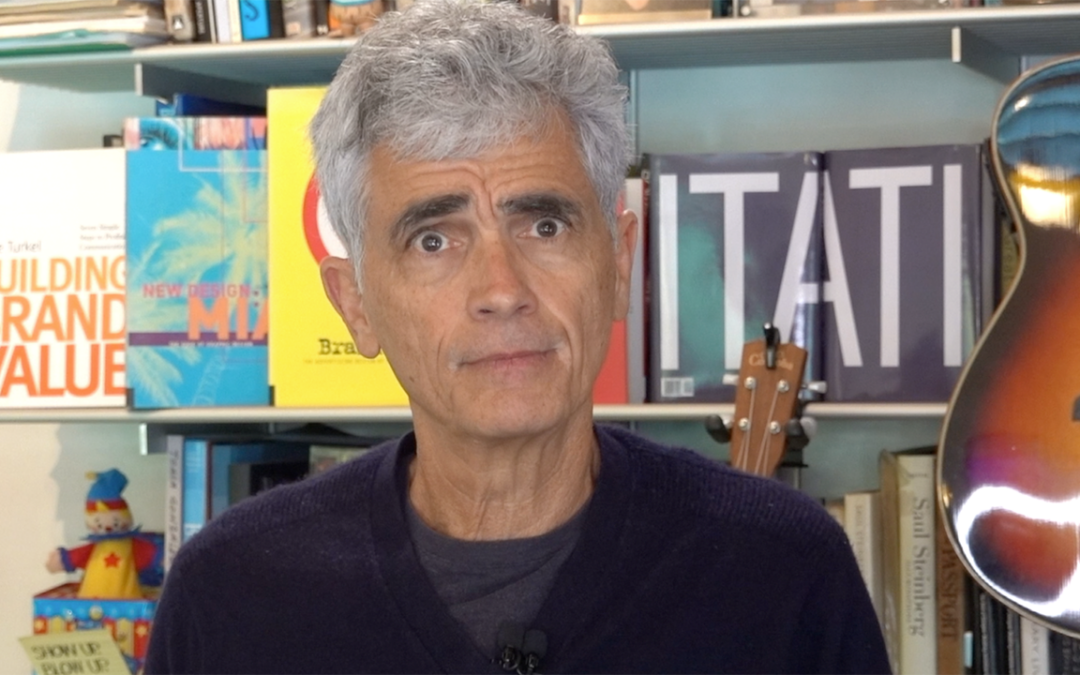Click HERE to watch the video
Bad Publicity
The speaker at the workshop opened her talk with, “It’s a funny story…”
“…I went to the funeral of an old student of mine. She died when she was 48… so it was sad, but it’s a funny story.”
Wait…?
What…?
I’ve never ever heard someone complete the sentence, “It’s a funny story…” with the word “funeral” before.
I was a bit taken aback. But I’ll admit I did have to keep listening simply to find out what was so funny.
Here’s a spoiler alert: it wasn’t funny. Not funny, ha-ha, anyway.
At best, it was funny, odd.
It turns out that the speaker met a potential client at her student’s funeral, and that lead eventually turned into a big contract for her.
That was the “funny” part.
But regardless of the speaker’s definition of “funny,” the 48-year-old was still dead. And I doubt that either the deceased or her grieving family would have found the story funny.
This was the first time I had seen this particular speaker. And chances are pretty good that I’ll never see her again. But if I do, I’ll remember her and her stunning lack of empathy.
Bad Publicity
Studies show that audiences decide whether or not they will listen to a speaker in the first three to seven seconds that a speaker is on stage. Keynote speakers will tell you how important it is to capture your audience’s attention immediately.
Moreover, successful speakers will also tell you that if you give a speech and the audience members don’t remember who you are, what you told them, what you stand for, or why they should follow up with you, you didn’t do your job.
Based on that, let’s get back to the speaker I saw.
Did she get my attention? Sure.
Was she memorable? Sadly, yes.
But does that mean that macabre opening was a good way to start a presentation?
Uh, no.
Bad Publicity
I know, I know, “There’s no such thing as bad publicity.” That saying is credited to 19th-century American showman P.T. Barnum. And that maxim has been repeated, unchallenged, for as long as I’ve studied branding.
The trouble is, it’s not true.
Sure, bad publicity can be dramatic and compelling. And it can help establish awareness and even keep other, less troubling news off the front pages. And yes, some consumers are both intrigued and attracted by negative news.
But that doesn’t mean it’s good.
The use of negative sayings and slogans tends to be manipulative. For proof, consider how governments, religions, and advertisers use negative or misleading language to influence and control their intended audiences.
George Orwell’s prescient novel 1984 provides great insight here. In Orwell’s book, the totalitarian government of Oceania inscribed the following paradoxical slogans on the Ministry of Truth’s gleaming white pyramid:
“War is peace.”
“Freedom is slavery.”
“Ignorance is strength.”
As Orwell’s protagonist Winston said, “In the end, the Party would announce that two and two made five, and you would have to believe it. It was inevitable that they should make that claim sooner or later: the logic of their position demanded it.”
Thanks to these outbursts, of course, Winston was imprisoned in the Ministry of Love, the authority responsible for repression and brainwashing.
And, thanks to her statement that her student’s funeral was “funny,” that speaker whom I started this blog with is chained to a negative opinion in my memory.
Bad Publicity
Why? Because bad and misleading publicity is exactly what it sounds like. Let the listener beware.


I don’t think I’ve ever seen you discuss politics in this space, Bruce, and as a loyal fan, I will respect that practice. However, I am going to discuss a politician (hopefully without expressing any partisanship) because there is one public figure who seems to be immune to bad publicity, and that is our 45th President.
Because he has created a brand built on the idea that he is does not care about the sensitivities that others feel a need to tip toe around, he seems invulnerable to any of the scandals that had taken down others. He was behind in almost all polls when the Access Hollywood tape came out and not only didn’t he step down, as many urged him. He surprised everybody by winning. Scandals with porn stars… alleged rape… criminal charges that could lead to convictions… he could conceivably survive all these things and one gets the sense that for every vote he loses because of these scandals, he wins as many from people who like his refusal to bow to standards that most others feel wouldn’t dare ignore.
I wouldn’t recommend this approach to any other politician or businessman, but it’s hard to deny that for at least one public figure whose success relies on public opinion, there really isn’t such a thing as bad publicity.
Another excellent commentary and bit of advice.
Thank you.
Thanks Rod. Good to hear from you. It’s been WAY too long.